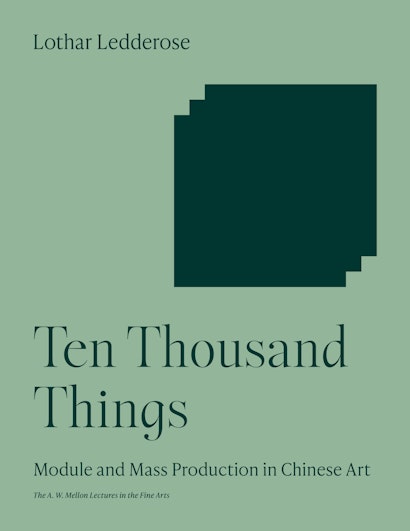Chinese workers in the third century BCE created seven thousand life-sized terracotta soldiers to guard the tomb of the First Emperor. In the eleventh century CE, Chinese builders constructed a pagoda from as many as thirty thousand separately carved wooden pieces. As these examples show, throughout history, Chinese artisans have produced works of art in astonishing quantities, and have done so without sacrificing quality, affordability, or speed of manufacture. In this book, Lothar Ledderose takes us on a remarkable tour of Chinese art and culture to explain how artists used complex systems of mass production to assemble extraordinary objects from standardized parts or modules. He reveals how these systems have deep roots in Chinese thought and reflect characteristically Chinese modes of social organization. Combining invaluable aesthetic and cultural insights with a rich variety of illustrations, Ten Thousand Things make a profound statement about Chinese art and society.
Awards and Recognition
- Winner of the 2002 Joseph Levenson Book Prize for pre-1999 China
Lothar Ledderose is senior professor at the Institute of East Asian Art History at Heidelberg University. An internationally renowned scholar of Chinese art and calligraphy, he has curated numerous exhibitions on Asian art, including Treasures from the Forbidden City (Berlin, Vienna 1985), The Terracotta Army (Dortmund 1991), Japan and Europe (Berlin 1993), and an exhibition of Chinese painting of the Ming and Qing dynasties (Baden-Baden 1985). His books include Mi Fu and the Classical Tradition of Chinese Calligraphy (Princeton).
"A truly unique book to clarify the mind about what Chinese art is now and what it was."—Choice
"[A] stimulating and provocative overview of the theme of creativity in Chinese art . . . This may be a book with a large and ambitious thesis, but it is also one very firmly grounded in specifics . . . illustrated with a richness and aptness which is rarely seen today . . . The clarity of exposition and the liveliness of the language makes each of the eight linked essays a pleasure to read on its own . . . The work deserves a wide readership."—Craig Clunas, Burlington Magazine
"While the idea that traditional China can be defined by its production processes is not entirely new, only with Lothar Ledderose's Ten Thousand Things has that argument been made comprehensively, and in terms that fully engage the social and art historian . . . An excellent resource for the social and art history of China."—James A. Flath, Pacific Affairs
"Ledderose's book, although written to be accessible to a nonspecialist reader, should have an equally impressive impact on scholars. . . . After reading it, one cannot but be excited about the future direction and possibilities of Chinese art history."—Nancy Shatzman Steinhardt, Journal of Asian Studies

